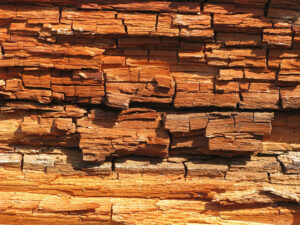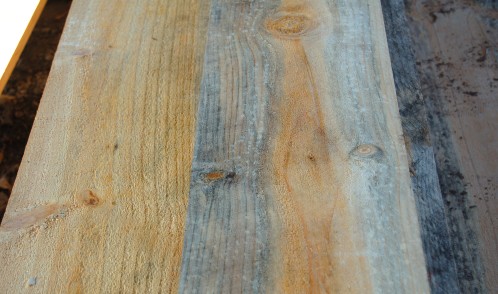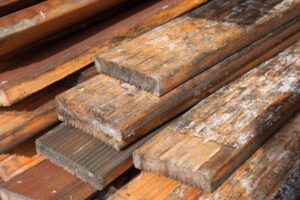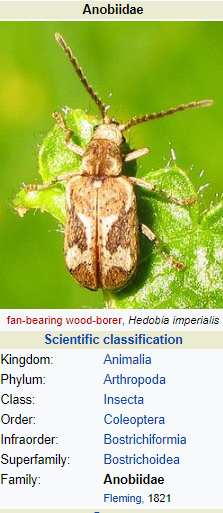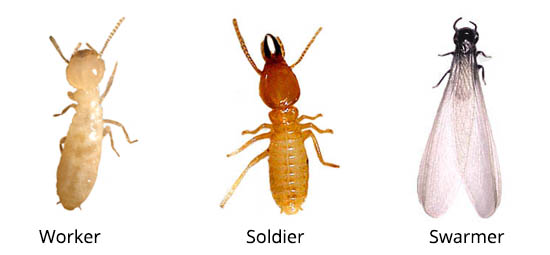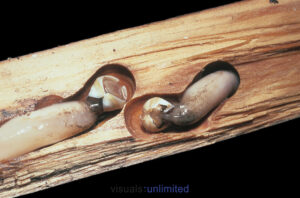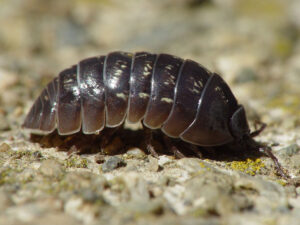Deterioration of wood is something we’ve all come across at some point in our lives. Whether it was walking along a wooden walkway and we see some “dodgy-looking” areas or walking in the forest seeing mushrooms grow on fallen trees. These are all signs of the deterioration of wood. Whether you are selling, buying or building with wood, the following post will be beneficial for you.
We will be talking about all the factors that cause or accelerate wood decay.
While we briefly discussed treated timber vs. untreated timber in a previous post, we felt the need to go into more detail regarding the various factors that affect wood deterioration.
Why is it important to know about Factors of Deterioration affecting wood?
While you are able to use untreated timber for various structures, you are risking the structural integrity of your building. This is because of the fact that there are various factors that contribute to the process of decay of your timber.
This is especially important if you are planning on building any type of structure inside or outside of the house. As a buyer or seller of wood, you need to be aware of these factors in order to prevent them.
We firmly believe in buying SABS Approved CCA Treated Timber for any and all construction projects.
So without further ado, let us get to it.
Here are the top culprits when it comes to wood deterioration:
1. Fungin Decay and the Deterioration of wood
“A wood-decay fungus is any species of fungus that digests moist wood, causing it to rot.” – Wikipedia
Fungi feed on the cell walls, thereby weakening the structure of the wood that leads to wood breakages and even crumbling. While it may seem simple, there are various fungi and they all have different processes and outcomes.
In nature, these fungi are useful as they decompose natural materials and releases important nutrients back into the soil.
However, when you are building with wood, you don’t want ANY rot affecting the structural integrity of your project.
There are two main fungi that we would like to talk about:
2.Wood destroying fungi
Wood destroying fungi can be divided into three different categories namely: brown rot, white rot, and soft rot.
Brown Rot
Brown rot is usually considered more harmful than white rot. This type of fungi feed mainly on the lighter coloured cellulose content of the cell wall and leave the darker lignin more or less intact. This causes the wood to have a brown “cracked” appearance. The structure of the wood is compromised. Consequently, the wood has a brittle (will easily crumble in your hands) feel to it.
Brown rot is more common in soft woods like pine.
How to spot brown rot:
- Wood is brittle (Crumbles easily)
- Wood has a brown appearance
- Looks vertically and horizontally cracked (Resembles burnt wood)
- Extremely Dry
- Loss of strength
White Rot
With white rot, both cellulose and lignin are attacked by the fungi. Therefore, the breaking down of the wood is slightly more complicated. Because both cellulose and lignin are attacked, the wood loses most of its colour and becomes a white hue.
Opposed to brown rot, white rot does not cause the wood to crack and crumble. White rot will give the wood a more stringy/ fibre-like appearance. The wood will also lose it’s strength, weight and, as mentioned earlier, colour. White rot will also have a more moist, soft and spongy feeling when touched.
How to spot White Rot:
- Wood has a white hue (loss of natural colour)
- Appears stringy/ fibre-like
- Loss of strength
- Loss of weight
- Feels moist, soft and, spongy
Soft Rot
This type of fungus is most commonly found in areas where there is an abundant source of moisture. This includes places like walkways, wood that are in contact with the ground and windowsills that are exposed to rain.
“Decomposition commonly results from the organism making longitudinal cavities in, and parallel to, the axis of the cell wall” – SAWPA
While the rot might look similar to brown rot, it has subtle differences.
In wood that is wet, the fungus will be noticeable on the wood. It will create a superficial layer that can easily be scraped away. In dry wood, it will create cracks both with and against the grain of the wood. This type of rot is more common in hardwoods.
How to spot Soft Rot:
- Little to no loss of colour
- Cracks with and against the grain
- Noticeable superficial layer that can be scraped off on wet woods
3. Wood disfiguring fungi
Wood disfiguring fungi does not impact the structural integrity of the wood as much. As can be deducted from the name, it merely reduces the commercial value due to the fact that this type of fungi severely impacts the appearance of the wood.
As with the wood destroying fungi, wood disfiguring fungi can also be broken down into two categories namely staining fungi and moulds.
Staining Fungi:
Other terms for staining fungi are blue stain fungi or sapstain. There are mainly two groups of fungi that cause the discolouration of wood: Ascomycetes or the Fungi imperfecti (Deuteromycetes) groups. While these are two main groups of fungi there are between 150 – 200 individual fungi that can cause this reaction in wood. Therefore, when trying to determine the specific fungus, you will have to send a sample off to a laboratory for testing.
The spores for staining fungi can be carried through the air, water, insects and rainwater. Therefore, to prevent staining fungi it is important to do tree felling at the correct times, making sure that the wood is stored in a dry and safe environment. Additionally, it can be prevented by processing the timber as quickly as possible.
The wood affected by staining fungi will usually turn a blue/greenish hue, but the wood’s structure will not be affected. A brief explanation as to why the wood turns blue as stated by BASF:
The spores germinate and develop into hyphae. After dividing numerous times, the sapstain mycelia are formed. This is hyaline (glassy or transparent) to
begin with and spreads through the wood interior, mainly in the rays. In the course of its development, dark brown pigments (melanins) are formed in the hypha. The blue colouring comes from the hyphae of sapstain fungi – which have been darkened by the melanins inside them – shimmering through to the wood surface.
This type of fungi is most common in softwoods like pine and is a common culprit in the deterioration of wood.
How to spot Staining Fungi:
- Wood still possesses its structural integrity
- Wood may have a blue-black, blue-grey, brownish or purplish discolouration
Mould:
Mould is the one fungi that most of us are familiar with. We know it because it not only appears on wood, but it shows up in our food and other organic materials
too!
While we call it “mould” this is not the description/name of a particular fungus species but rather a term used to refer to all the types of fungal mycelia and their spore carriers growing on the surface of a given material. The spores stick to the surface of the wood and feed off of the freely available sugars and other organic substances.
How to spot mould:
- Powdery or woolly mycelial growth on the surface of the wood
- The strength of wood not compromised
- Surface moulds are black, shades of green, brown and occasionally orange
4.Wood borers and the Deterioration of wood
Early identification of wood borers is vital to reducing the deterioration of wood. If not spotted it can have devastating effects on your materials. Therefore, always look out for the following signs that you might have a wood borer problem:
- Holes and tunnels in wood
- Weak and crumbling floorboards
- Bore Dust (Below or close to holes in wood)
- Dead and/or adult beetles
There are three main types of borers you should be looking out for in order to prevent the deterioration of wood: The Lyctid Borer, Anobiid Borer and, Cerambycid Borer.
5.The Lyctid Borer
This species includes seventy different species of woodboring beetles. These beetles are able to survive in colder weather. Additionally, the larvae can survive in wood for months, even years! If this beetle is left without any intervention, it can reduce the wood to a mass of powder.

6. The Anobiid Borer
7.Cerambycidae Borers
These beetles can be identified by their long antennas, usually as long as their body! However, some of the species in Cerambycidae have fairly short antennas which makes them difficult to identify as you can mistake them for one of the above species.
.
If you suspect that you might be having a problem with borers, you can contact an extermination company to assess the damage and control the outbreak to prevent further deterioration of wood.
8. Termites and the Deterioration of wood
While there are a lot of different termites, there are only three that are harmful to properties in South Africa:
- Neotermes spp
- Coptotermes spp
- Cryptotermes spp. (native)
In this blog post we’ll be focusing on two areas of termites:
9.Subterranean termites
There are three main identifiable termites within the subterranean group. The swarmers, workers and soldiers. Each has their own duty to help the colony.
These bad boys have huge underground colonies, some of the colonies even have more than one egg-laying female. Consequently, they can spread like wildfire!
Should I be worried about Subterranean termites?
Yes! These termites will not only speed up the deterioration of wood, but they will attack any cellulose-based products. This includes paper and other plants. This is the most common species of termites. These colonies can inflict major structural damage. Therefore, when you see any signs of subterranean termites, it’s best to call in pest control!
How to spot Subterranean termites:
- Winged Swarmers
- Mud Tubes (Under or on wood and other surfaces)
- Wood damage
10.Dry wood Termites
Drywood Termites are difficult to spot. This is due to the fact that they do not require in-ground contact. They make their entire nest in the wood that they are infesting and rarely come out. Consequently, there are no visible mud tubes on the surface of the wood or floor. However, because they make their whole nest in the wood that they are infesting, it is common to find small holes in the wood, with dust and debris around the hole. This is because they have to push debris out of the nest.
Because they can go undetected for so long, they usually inflict major structural damage without you even knowing that they are there.
How to spot Dry wood termites:
- Small holes in wood
- Dust/Debris laying below/close to the hole
- Flying termites
As soon as you see any signs of termites it is best to deal with it as swiftly as possible!
11. Marine Borers and the Deterioration of wood
As you would have thought, marine borers are found by the seaside and in the marines. They not only contribute to the deterioration of wood, but they also attack various other materials in the sea such as rocks, ships, coral reefs, clays etc.
Tere are two main types of marine borers that are destructive and should be dealt with quickly! These two are Molluscs and Crustacea species:
12. The Molluscs
These species are most commonly referred to as “ShipWorms”. This is due to the fact that they most commonly attack wooden ships and reduce the structural integrity of the wood that they are feeding on.
“They are notorious for boring into (and commonly eventually destroying) wood that is immersed in sea water, including such structures as wooden piers, docks and ships; they drill passages by means of a pair of very small shells borne at one end, with which they rasp their way through” – Wikipedia
13.Crustacea and the Deterioration of wood
While Crustacea is a very broad term for various species, there are one species that affect the deterioration of wood. That is the terrestrial isopod known as “Woodlouse” plural woodlice.
These tiny creatures are most active at night and feed on dead plant materials.
You may find these little ones in your home over the winter months as they move from outside (cold areas), to a warmer area inside a home. When you find these in your home, it might be an early warning sign of moisture damage as they love to live in warm, moist areas where they won’t be disturbed.
These are not as worrisome as other wood borers, but can still be harmful enough to affect the structural integrity of your wood. Therefore, it is best to get rid of them if you do find them somewhere in your home.
14.Weathering and the Deterioration of wood
Weathering is a term used to describe the natural effect the environmental conditions have on untreated wood.
A few factors that contribute to the deterioration of wood are:
- Moisture
- Sunlight (UV Rays)
- Heat/cold
- Chemicals
- Abrasion by windblown materials
- Biological agents
Source: U.S. Forest Service
All of these factors contribute to your wood getting a driftwood-like appearance. It loses it’s natural colour and becomes a duller grey-white colour. This is due to the fact that UV-Rays, in particular, are impacting the polymer bonds within the wood substrate (cellulose, hemicelluloses and lignin). Additionally, the degradation of these cells means that they become loose and eventually starts eroding the wood’s surface.
Therefore, it is important to keep an eye on your untreated timber, when you start seeing weathering, you should consider taking action before the wood’s structural integrity is compromised.
In conclusion to the deterioration of wood:
There are many factors that contribute to this.
From fungi to insects and even the weather contribute to the appearance and structural integrity of your wood. Using the information above, we believe that you will be able to determine the cause of the degradation of your timber.


